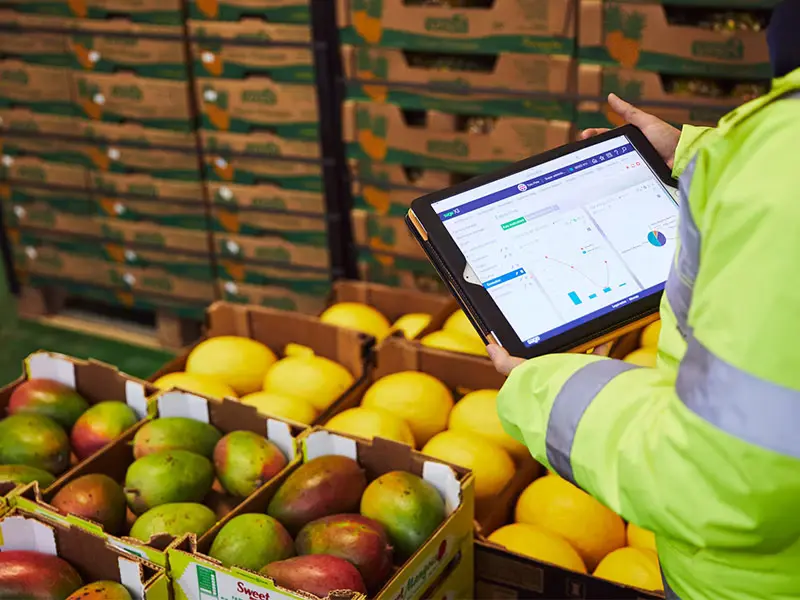Introduction:
In an era defined by environmental consciousness, industries worldwide are reevaluating their practices to reduce their carbon footprint. The fruit distribution sector, with its global reach, plays a crucial role in the broader effort to mitigate climate change. This blog explores the significance of reducing the carbon footprint in fruit distribution, the challenges involved, and innovative strategies to foster a sustainable future.
Understanding the Carbon Footprint in Fruit Distribution:
1. Transportation Emissions:
The bulk of the carbon footprint in fruit distribution stems from transportation. Long-distance shipping, refrigerated transportation, and the use of fossil fuels contribute significantly to greenhouse gas emissions. Addressing this aspect is paramount in making fruit distribution more sustainable.
2. Packaging Materials:
The materials used in packaging also contribute to the carbon footprint. Traditional packaging, often derived from non-renewable resources, increases emissions during production and disposal. Adopting eco-friendly packaging materials is a crucial step in reducing the overall environmental impact.
3. Supply Chain Practices:
The complexity of the fruit supply chain introduces additional opportunities for emissions. Inefficient supply chain practices, such as excessive handling, can lead to increased energy consumption and emissions. Streamlining these processes is essential for reducing the carbon footprint.
Strategies for Reducing Carbon Footprint:
1. Optimizing Transportation Efficiency:
- Route Optimization:
Implementing advanced logistics and route optimization systems helps minimize unnecessary mileage, reducing fuel consumption and emissions. Smarter route planning ensures a more efficient and eco-friendly distribution process.
- Utilizing Sustainable Fuels:
Transitioning to sustainable fuels, such as biodiesel or electric-powered vehicles, significantly decreases the carbon footprint of transportation. The fruit distribution sector can explore and invest in these alternatives to align with global sustainability goals.
Implementing Cold Chain Innovations:
- Energy-Efficient Refrigeration:
Upgrading to energy-efficient refrigeration systems minimizes the energy consumption associated with maintaining the cold chain. These innovations contribute to a more sustainable fruit distribution process without compromising the quality and freshness of the produce.
- Temperature Monitoring Technology:
Adopting advanced temperature monitoring technology ensures precise control over the cold chain, preventing unnecessary energy usage. This technology helps maintain optimal conditions for fruits during transportation, reducing spoilage and waste.
3. Eco-Friendly Packaging Solutions:
- Biodegradable Materials:
Shifting to biodegradable packaging materials minimizes the environmental impact associated with traditional packaging. Materials such as cornstarch-based plastics or compostable packaging contribute to a circular economy and reduce the carbon footprint.
- Minimalist Packaging Design:
Adopting a minimalist approach to packaging design reduces the use of materials and lowers the overall carbon footprint. Lightweight and minimalistic packaging options not only decrease waste but also contribute to more sustainable distribution practices.
4. Technology-Driven Supply Chain Optimization:
- Blockchain for Traceability:
Implementing blockchain technology enhances traceability throughout the supply chain. This transparency allows for better monitoring and management, reducing the need for excessive handling and transportation, thereby lowering emissions.
- Data Analytics for Demand Forecasting:
Utilizing data analytics for demand forecasting enables more accurate planning and distribution. By understanding consumer demand patterns, companies can optimize inventory levels, leading to more efficient transportation and reduced carbon emissions.
Overcoming Challenges:
1. Cost Considerations:
One of the primary challenges in implementing sustainable practices is the perceived cost barrier. However, companies can view these initiatives as long-term investments that not only contribute to environmental conservation but also yield economic benefits through reduced operational costs.
2. Infrastructure Readiness:
The transition to sustainable transportation methods, such as electric vehicles, may be hindered by a lack of infrastructure. Collaborative efforts between governments and industry stakeholders can address these challenges by investing in the necessary infrastructure.
3. Consumer Education:
Shifting consumer preferences towards more sustainable practices requires education and awareness. Companies can play a pivotal role in educating consumers about the environmental impact of their choices and encouraging support for eco-friendly initiatives.
The Path Forward:
1. Collaboration Across the Supply Chain:
Addressing the carbon footprint in fruit distribution requires collaborative efforts across the entire supply chain. From farmers and distributors to retailers and consumers, a united approach fosters a collective commitment to sustainability.
2. Investment in Research and Development:
Ongoing investment in research and development is crucial for identifying and implementing innovative solutions. This includes advancements in transportation technology, packaging materials, and supply chain optimization tools.
3. Regulatory Support:
Government support through policies and incentives can accelerate the adoption of sustainable practices in fruit distribution. Regulatory frameworks that encourage the use of eco-friendly technologies and penalize excessive carbon emissions create a conducive environment for positive change.
Conclusion:
Reducing the carbon footprint in fruit distribution is a multifaceted endeavor that requires concerted efforts from all stakeholders.
